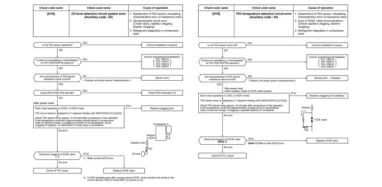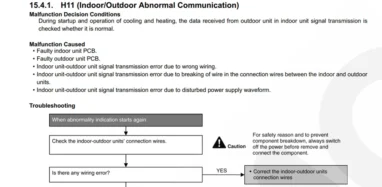When you think of buying an HVAC system for your home, office, or any other area, you will be exposed to a wide range of HVAC systems’ types, versions, and variations. You should know about all the different HVAC types so that you can choose the one that suits you best in terms of all your requirements and specifications.
The most common HVAC type that you may hear about is RTU and you may need to know, what does RTU mean in HVAC? Well, here is the guide that will brief you on all aspects of RTU in HVAC.
What is RTU in HVAC
In the HVAC world, the RTU stands for Roof Top Unit. Talking about the traditional HVAC system, almost all of them have two parts, one is installed in an outdoor environment while the second one is installed inside the room or building.
RTU is called a rooftop unit as all the components in the HVAC systems are installed on the roof without requiring an indoor unit. Whether it is the compressor, fan, coils, or any other components, they all are packaged in a single compact unit that is placed on a rooftop.
The air blowing from the unit is distributed in the house using ductwork that circulates in the necessary area of the house. This factor makes it quite efficient and easy to install and maintain as well.
What is an RTU heat pump
Depending on the weather conditions and atmosphere of different regions, RTU can be cooling only, heating only, or both cooling and heating systems.
If the RTU system is installed on a building for heating purposes, it will have a connection to an electric heating element, gas burner, or heat pump.
If the system is cooling-related, it will have heat exchangers and other related components for getting the job done efficiently.
What is special about packaged RTU
Many things make a packaged RTU special and quite effective. The first thing is that they don’t require any indoor space so that you can keep the mess and components away from your eye.
Apart from this, multi-unit HVAC systems tend to consume more energy which ultimately increases the electricity bills while providing a bit less performance as well.
Having a packaged RTU at your home will provide you with efficient cooling or heating without causing a hole in your pocket in terms of energy bills.
What is the cost of an RTU unit
The price of an RTU unit can vary depending on its size and features but as a general average, the cost of an RTU unit ranges from somewhere $600 to $8000 while some units go even further than this. When it comes to the cost of operation, RTU will cost you less as compared to a multi-unit HVAC system.
Why are RTU 1 terms used for some units
This could be a version or model number but the fact is that RTU 1 is usually used with the HVAC units that have separate compressors, one for heating purposes and another one for cooling.
This could be taken as a one-way road as different functions will be performed by different components. The best thing about RTU 1 is that they are more efficient in terms of performance and can live relatively long as compared to normal RTU HVAC units.
What is the difference between RTU and AHU
As said earlier, RTU stands for Roof Top Unit while the AHU is the short form of Air Handling Unit. RTU is just a subcategory or a type of AHU and they are almost the same in functions, operations, and outcomes as well.
The major difference is that the RTU solely works while sitting entirely on the rooftop of the building. Although there aren’t any major differences between RTU and AHU, some of the factors that vary in installation, maintenance, or other aspects are listed below:
- RTU can be classified as an AHU but it is a complete outdoor unit.
- You don’t need to waste space inside your room like you have to do for AHU. It is because all the components of RTU will be placed on the rooftop while you will only get a ductwork opening inside your room or building.
- RTU will require more care and attention as compared to AHU. This is because RTU is placed on the roof in an open environment and has to face all changing weather conditions.
- There is no difference in working as both these units suck air from the indoor environment and throw it into the cooling coils for further procedures.
- Both AHU and RTU have most components in common and their operations as well. The list goes on with humidifiers, vibration isolators, heat recovery devices, blowers, fans, heating elements, controls, mixing chambers, filters, etc.
What are the advantages of an RTU HVAC system
There are plenty of advantages that come with a Rooftop Unit and we will surely discuss the ones that will tell you why having such HVAC systems at your home or office is necessary.
Energy Efficient
All the components of the RTU system are manufactured in an optimized way while keeping the aim in mind to create a system in such a way that it can flawlessly decrease utility bills by consuming less energy.
Easy Troubleshooting
As all the components of the system are placed in a single place, it is easy for the technician to diagnose the issues and get rid of troubles in an easy as well as efficient manner.
Easy Installation
This is a great advantage for the technicians as installing RTU is more than easy as compared to the simple HVAC system. It can be said that the systems are pre-assembled and you just need to place them on the roof and attach some ductwork with the unit.
Minimum Space
RTU requires minimum space to get installed on a rooftop which means that you can have RTUs on your building roof, still, you can have a good area if you want to install other things on it. It also protects homeowners from allocating a specific indoor space.
Curious to learn what is mbh in hvac or what is enthalpy in hvac systems too?


